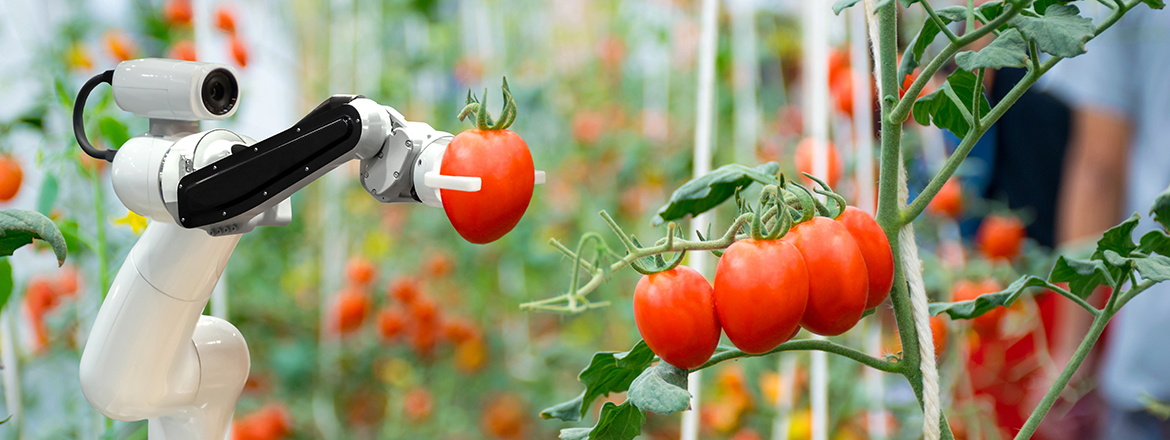Kateryna Schroeder │ Agricultural Economist, World Bank, USA

Kateryna Schroeder is an agricultural economist at the World Bank Group’s Food and Agriculture Global Practice in Washington, DC. In her interview to IAMO, she stresses the importance of digital technologies in addressing market failures along the global agri-food value chains and speaks of the role of public policies in this process.
IAMO: Ms. Schroeder, in the World Bank's latest flagship report you investigate how digital technologies (can) address existing market failures along the global food chains. In this context, what typical market failures do you think modern technologies help to mitigate already today?
Kateryna Schroeder: One of the inherent features of digital technologies is that the cost to generate, replicate, store, and transmit digital data on digital devices is essentially zero. As a result, digital technologies fundamentally change the nature and intensity of information flows in agricultural markets, leading to a sharp reduction in information-related transactions costs, and thus lowering market failures. Transaction costs, conceptually defined as costs associated with an exchange of goods and services between buyer and seller, play a central role in resource allocation decisions of agricultural producers, and consequently, resource allocation at the societal level. Specifically, when the cost of transaction through market exchange creates disutility greater than utility gain in producers, this results in a market failure. Broadly, three types of information-related transaction costs can be distinguished – search and information costs, bargaining and decision costs, and supervision and enforcement costs. Search and information costs are the costs of looking for information about trading partners, prices and quality of product; bargaining and decision costs are comprised of resources put into negotiating terms of an agreement between the parties; supervision and enforcement costs include time and costs put into monitoring and enforcing the contract. Driven by increased availability of information, transaction trust and the ability to connect economic agents along the agri-food value chain, the above transaction costs can be significantly lowered. Consequently, digital technologies can impact economic activity in the agriculture sector in several ways. First, as transaction costs fall, firms and farms take up new economic activities that high transaction costs once precluded. For example, farmers may take up new technologies or enter new markets that were previously unattainable. Second, for existing activities, the first impact of falling transaction costs is the boost in productivity and profitability. And finally, as transaction costs fall to near-zero levels, new business models emerge to spark innovation, creating a virtuous cycle leading to further reductions in transaction costs.
IAMO: Could you provide a few examples of the role the World Bank plays in supporting the implementation of digital technologies along the agri-food value chains in different regions?
Kateryna Schroeder: Digital agriculture agenda plays an increasingly important role in the World Bank’s analytical and operational work. Across the regions, there are a variety of engagements that promote the use of digital technologies in the agri-food sector, such as support for creating a digital innovation ecosystem in the agricultural sector in Kenya, developing digital cattle traceability program in Uruguay, and implementing digital credit pilots for smallholder farmers in Myanmar, to name a few.
IAMO: What do you think is the role of public policies in the process of digital transformation of the global agri-food value chains?
Kateryna Schroeder: The role of public sector is to maximize potential societal gains of improved efficiency, equity and environmental sustainability that stem from the proliferation of digital agriculture, while mitigating the potential risks associated with digital technologies. Supply and use of digital technologies in agri-food systems is fundamentally a private sector activity, driven by private gains of the profit-maximizing producers and utility-maximizing consumers. However, often private economic agents may not have the right set of incentives to make rational decisions due to existing market or policy failures, lack of public good provision, or their bounded rationality (i.e. not having enough information about the choice options and the impacts of their decisions). Some characteristics of the digital goods as well as agricultural sector, may also make it more challenging for private sector to supply and use digital technologies in the sector. In such cases, the entry point for public policy is to influence the incentives and decisions of private agents with the goal of maximizing efficiency gains at the societal level. In addition, the role of public sector is to maximize the societal gains that stem from the adoption of digital agriculture but may not be fully internalized by private economic agents, such as equity and environmental sustainability. The latter consists of creating a set of incentives to prompt a certain behavior among private economic agents with the goal of maximizing the societal benefits, while also mitigating potential (and sometimes unknown) risks that digital agriculture may bring.
IAMO: In your opinion, what are three most important conditions for successful digital transformation of the agri-food sector in the future?
Kateryna Schroeder: The most important starting point in ensuring digital transformation in the agri-food sector happens is to enable the development of essential infrastructure for digital agriculture in rural areas – both digital (i.e. network coverage) and non-digital (i.e. roads and electricity). The second important condition is the existence of agri-food focused innovation ecosystems in the countries, spurred by the private sector with the support of public sector, when necessary. Such ecosystems are prerequisites for enabling the development of digital solutions for targeting existing constraints in the agricultural sector. Finally, for the digital transformation to be a success, risks associated with the distribution of its dividends need to be mitigated.







